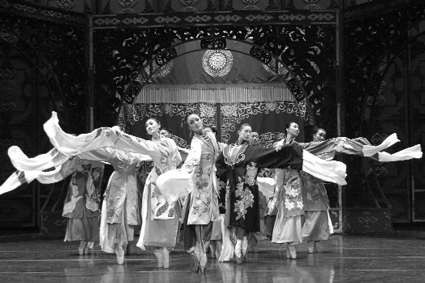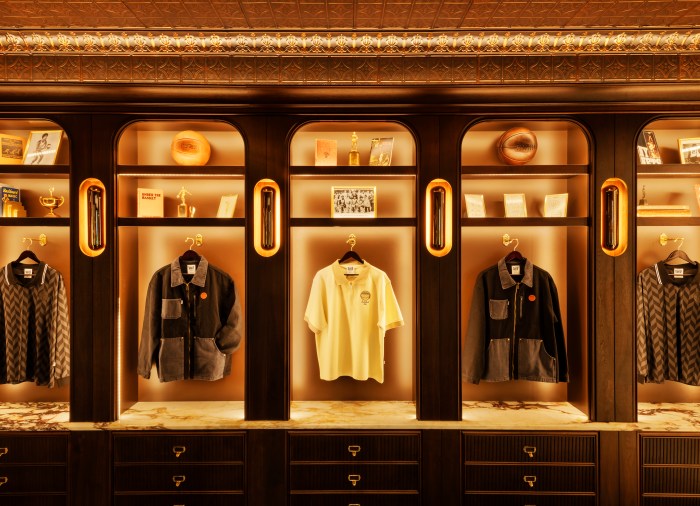National Ballet of China’s cinematic success on full view at BAM
There is little comfort in “Raise the Red Lantern” which depicts the harsh realities of Chinese feudal life. The1990 novella by Su Tong about a concubine in a feudal household inspired Zhang Yimou, who directed both the film and the lavish ballet performed by The National Ballet of China at the Brooklyn Academy of Music October 12 to 15.
When Zhang adapted it for film and then the ballet, he took creative liberties and interestingly, the permutations reflect the changing times. Zhang’s draconian rearrangement of the pieces, shuffled like mah jong tiles, further refined his vision.
In the ballet, a peasant girl is called and transported into the home of a Master who takes her as his Second Concubine. She remembers a past lover, an opera actor, and they duet. This can happen in a story ballet. First Concubine tells and all three suffer the Master’s wrath. In the earlier versions, only the women are punished. The ballet splits the story’s kernel, which was women’s unhappy plight.
BAM spectators were never left wishing for imagery. Even the cold, colorless, militaristic, executioner’s scene is rich with visual metaphor. The director also designed the spectacular lighting, informed by his layered cinematic experience. Zhang won awards for his cinematography of “Yellow Earth” early in his career.
The fame he won in his subsequent “House of Flying Daggers” translates into this ballet’s contemporary touches that sometimes startled in the context of a largely traditional setting. Choreographers Wang Xinpeng and Wang Yuanyuan hit on movements that connect the old and new, East and West, with acuity. Second Concubine’s remarkable extensions transforms her body into opposing flying daggers. Her red silk point shoes cut through swathes of air. A striking black clad Opera Performer has a painted geometry on his face and flowing beard that he twists and separates. Standing in profile, he ripples his torso like a hip-hop dancer.
Costumes by Jerome Kaplan were visionary, but never detracted from the storyline. Color, in costumes and décor, carries themes of intrigue, love, and brutality. In Chen Qigang’s traditional-style music, themes for repeated events create ceremony, as in the film. A group of percussionists sit in a small fenced in area at the side during a mini-opera performance behind round transparent stage doors. The stage is composed like a painting with the illusion of perspective and depth.
In a gaming room scene, the male corps sinuously sweep the many mah jong tables with their arms or sat on them. Finally the tables are overturned and transformed into a parapet of giant mah jong tiles with characters painted on the underside, by the craft of stage designer Zheng Li.
The work reached high drama when huge sticks of red chalk are beat and clapped loudly on a white screen, effectively relating the fate of the three characters. At the same time, a painting unwittingly is created. Destruction and creation are juxtaposed when Second Concubine gently billows an enormous red sheet after a brutal wedding night. Dancers burst the lanterns with sticks and then fly through paper screens like action figures, breaking the spell.
gaycitynews.com


































